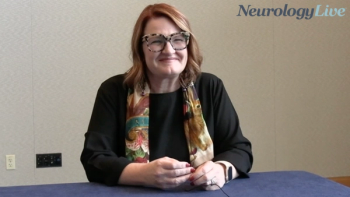
Mechanistic Rationale Behind Amlenetug to Treat Multiple System Atrophy: Johan Luthman, PhD
The executive vice president and head of R&D at Lundbeck provided more context on the scientific rationale of amlenetug, an investigational monoclonal antibody designed to halt the spread of alpha-synuclein aggregates in multiple system atrophy. [WATCH TIME: 3 minutes]
WATCH TIME: 3 minutes
"Amlenetug is designed to act like a vacuum cleaner for the brain—binding to alpha-synuclein seeds and helping the immune system clear them before they can spread and cause further damage."
The therapeutic landscape for neurodegenerative diseases has started to perk up in recent years, with conditions like multiple system atrophy (MSA) starting to see its first major phase 3 trials. Amlenetug (Lundbeck), a human monoclonal antibody designed to bind extracellular alpha-synuclein to block its uptake, is among the rising agents, with a registrational trial dubbed MASCOT (NCT0670622) that is currently ongoing.
Greater details behind MASCOT, a 72-week, double-blind, randomized, global trial, were released at the recently concluded
Following the meeting, NeurologyLive® sat down with Johan Luthman, PhD, executive vice president and head of R&D at Lundbeck, to discuss the mechanism and hypothesis behind amlenetug to treat MSA. He explained that MSA is driven primarily by abnormal aggregation of alpha-synuclein—a misfolded protein that accumulates in oligodendroglial cells and propagates through the brain in a prion-like manner. According to Luthman, the antibody’s active Fc-mediated mechanism enables a form of “biological vacuum cleaning,” assisting the immune system in removing toxic aggregates and potentially slowing or halting disease progression.
Newsletter
Keep your finger on the pulse of neurology—subscribe to NeurologyLive for expert interviews, new data, and breakthrough treatment updates.


































